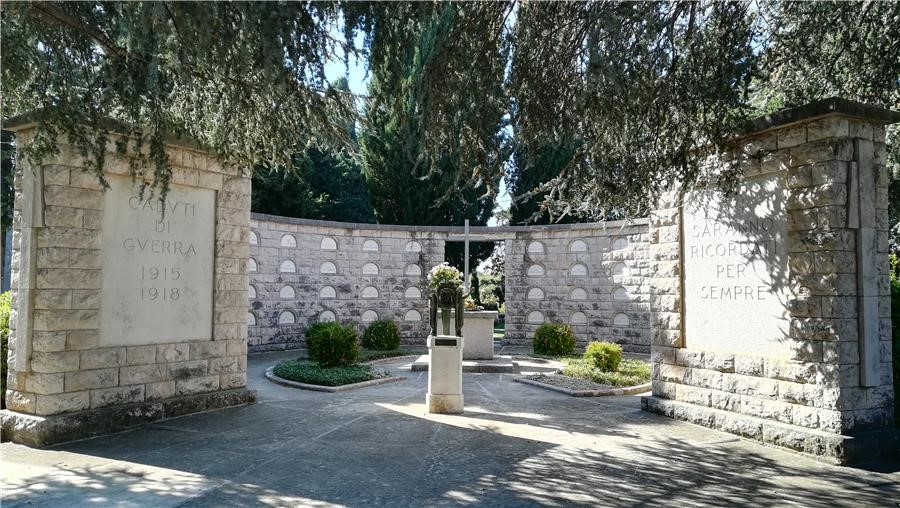Italian soldiers monument
around 50m2 and 4 m high
In year 1932, the remains of deceased Italian soldiers were collected and putted in tombs in this monument. Altogether there are 88 tombs with 89 solders buried there. In one tomb there are remains of two solders.
“Madrine dei militari morti” (Godmothers of the dead solders) was (and still is) an association gathering young women and mothers of the Italian soldiers that died in WWI in order to take care of their graves. In year 1932, the remains of deceased Italian soldiers were collected to be buried inside monument at Zadar cemetery. Altogether there are 88 tombs with 89 solders buried in the monument. In one tomb there are remains of two solders.
Italian community in Zadar is representing a bond between those who manage and those who have interest of visiting monument in order to protect and maintain Italian graves in Zadar.
Each year on 2nd of November, the anniversary of bombing City of Zadar in 1943, Italians that were born in Zadar but moved in Italy after its bombing, together with Italian Consul from City of Rijeka, City of Zadar and Zadar County representatives, gather in front the monument to pay respect to deceased Italians in WWI. Also, a mass in the small chapel in Italian part of the graveyard is performed.
around 50m2 and 4 m high
In year 1932, the remains of deceased Italian soldiers were collected and putted in tombs in this monument. Altogether there are 88 tombs with 89 solders buried there. In one tomb there are remains of two solders.
“Madrine dei militari morti” (Godmothers of the dead solders) was (and still is) an association gathering young women and mothers of the Italian soldiers that died in WWI in order to take care of their graves. In year 1932, the remains of deceased Italian soldiers were collected to be buried inside monument at Zadar cemetery. Altogether there are 88 tombs with 89 solders buried in the monument. In one tomb there are remains of two solders.
Italian community in Zadar is representing a bond between those who manage and those who have interest of visiting monument in order to protect and maintain Italian graves in Zadar.
Each year on 2nd of November, the anniversary of bombing City of Zadar in 1943, Italians that were born in Zadar but moved in Italy after its bombing, together with Italian Consul from City of Rijeka, City of Zadar and Zadar County representatives, gather in front the monument to pay respect to deceased Italians in WWI. Also, a mass in the small chapel in Italian part of the graveyard is performed.


20